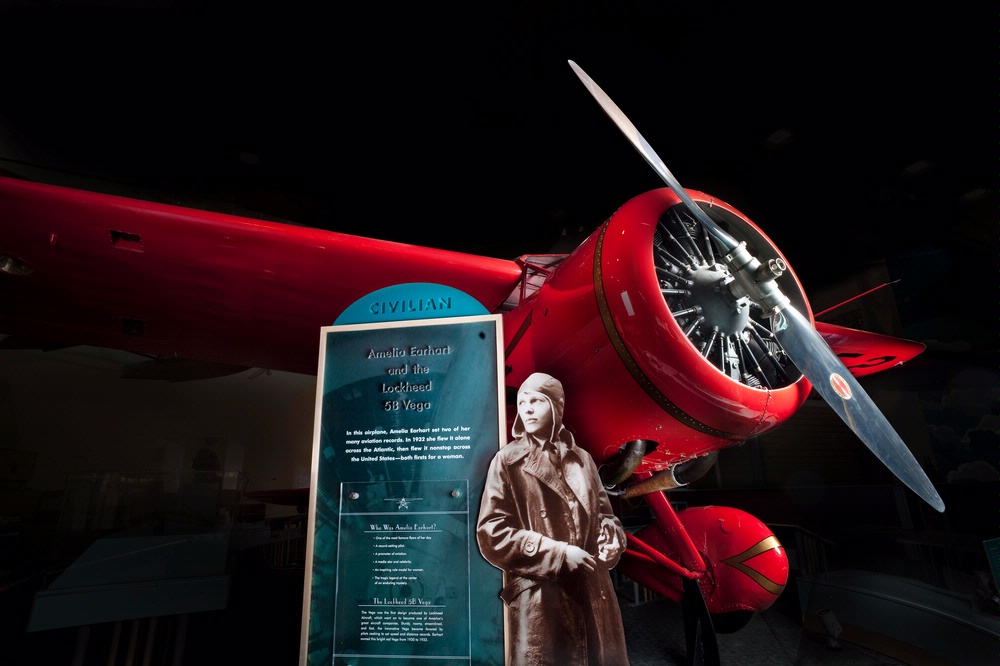The Lockheed 5B Vega

In 1932, Amelia Earhart flew this Lockheed Vega 5B for the first female nonstop solo transatlantic flight and a U.S. transcontinental flight.
Introduced in 1927, the Vega was the first product of Allan Loughead’s Lockheed Aircraft Company and its designer Jack Northrop. It sported a cantilever (internally braced) one-piece spruce wing and a spruce veneer monocoque fuselage (a molded shell without internal bracing), which increased overall strength and reduced weight. A NACA engine cowling and wheel pants reduced drag and provided streamline style.
Amelia Earhart bought this Vega in 1930. After a nose-over accident later that year, the fuselage was replaced and strengthened to carry extra fuel tanks. Three types of compasses, a drift indicator, and a more powerful engine were also installed. In 1932 Earhart flew the Vega nonstop and alone across the Atlantic and across the United States. She sold it to Philadelphia’s Franklin Institute in 1933. The Smithsonian acquired it in 1966.
National Air and Space Museum, Smithsonian Institution





